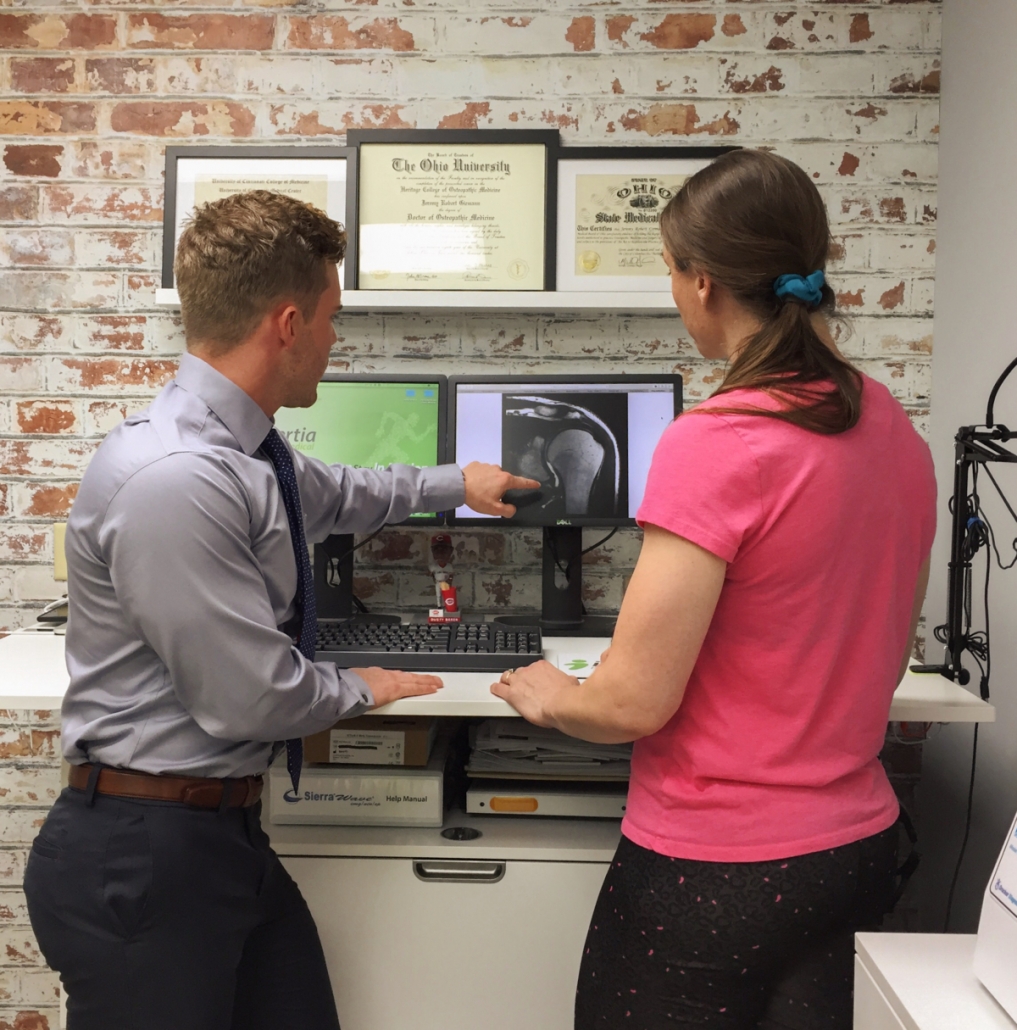 How many hours do you spend in a chair each day? If you’re anything like the average American, it’s likelythat you’re seated for 9 to 13 out of 24 hours. Wow! Doesn’t that seem like a fairly unfortunate way to experience the ride of life?
How many hours do you spend in a chair each day? If you’re anything like the average American, it’s likelythat you’re seated for 9 to 13 out of 24 hours. Wow! Doesn’t that seem like a fairly unfortunate way to experience the ride of life?
Keep your arms, hands, legs, and feet inside the ride at all times…
It Hasn’t Always Been Like This
It’s very strange when you think about it: We commute to work in the morning, seated. We work for 8-10 hours per day, seated. We drive home, seated. We “relax” in front of the TV, seated. We eat dinner, seated. We check e-mails and surf the web, seated.
I spent twenty-some years of my life in school, seated.
It’s so contrary to the way that we used to live just a short while ago. Before computers, cubicles, and modern amenities, we spent much less time on our backsides.
There is now, more than ever, an incredible mismatch between our historical and modern lifestyles. Our social structures and environments have changed so greatly that many of the ailments we are now challenged with could perhaps be considered diseases of modernity. At the very least, some of the most perilous medical maladies are jeopardizing our health earlier in life and at greater rates than ever before.
Once upon a time, food was scarce and we had to expend a great deal of energy hunting and gathering before we were able to eat. Now? There’s an app for that. All it takes is click or two and within minutes a few thousand calories will arrive neatly packaged and fresh from the oven at your doorstep. Similarly, our ancestors used to sit in order to rest between long periods of upright activity. Now sitting has become our default position and the chair, our constant companion. We keep sitting in the chair like we just don’t care.
A 2009 Australian study found that office workers “who spend high amounts of time sitting at work tend to spend high amounts of time sitting on non work days.” The more we sit, the more we sit.
The Chair – Your Biggest Health Hazard?
“Sitting is more dangerous than smoking, kills more people than HIV, and is more treacherous than parachuting. We are sitting ourselves to death,” says Dr. James Levine, a professor of medicine at Mayo Clinic and author of Get Up!: Why Your Chair is Killing You and What You Can Do About It.
Excess sitting has been associated with 24 different chronic diseases including obesity, diabetes, high blood pressure, and even cancer. Muscles shut off, the metabolism slows, circulation is compromised, and connective tissue shortens.
A 2009 study published by the American College of Sports Medicine titled Sitting Time and Mortality from All Causes, Cardiovascular Disease, and Cancer found a dose-response association between sitting time and mortality from all causes and CVD. Based on the findings of the study it was recommended that in addition to the promotion of moderate-to-vigorous physical activity and a healthy weight, physicians should discourage sitting for extended periods.
In my musculoskeletal medical practice, I encounter countless patients who report any number of body pains, which can seemingly be linked to too much time in a chair. It’s not only that we sit, but also how we sit. Often our backs are bent, shoulders are slouched, and heads are hunched forward. This posture predisposes us to neck pain, shoulder pain, back pain, and a multitude of dysfunctional biomechanics.
Quite simply, we are made to move. A body in motion stays in motion – it’s Inertia.
Benefits of Breaking The Chair Habit
The simple act of standing imparts remarkable physiologic changes. When we get out of a chair and bear our bodyweight, much of our muscular system becomes activated and our baseline caloric expenditure begins to rise. Within a minute or two, many molecular mechanisms are activated which directly influence mobilization of fat stores, clearance of blood sugar, regulation of cholesterol, and a host of other cellular processes.
Several studies examining the effects of standing vs. sitting have found standing to be associated with improved mood, increased energy, and greater productivity.
What’s more? Standing increases an individual’s tendency to move. Whether walking to the printer across the room, to a water fountain down the hall, or to a coworker’s office around the corner, it’s more likely to happen if we’re already up.
These small activities contribute to what Dr. James Levine refers to as non-exercise activity thermogenesis, or NEAT. In the Best Practice & Research: Clinical Endocrinology and Metabolism publication, Dr. Levine described non-exercise activity thermogenesis:
“NEAT is the energy expended for everything we do that is not sleeping, eating, or sports-like exercise. It ranges from the energy expended walking to work, typing, performing yard work, undertaking agricultural tasks and fidgeting. Even trivial physical activities increase metabolic rate substantially and it is the cumulative impact of a multitude of exothermic actions that culminate in an individual’s daily NEAT.”
Ditch the seat and increase your NEAT.
 What Are We To Do? The Chair Challenge
What Are We To Do? The Chair Challenge
As Bob Marley might say, “Get up, stand up!”
It’s hard. Chairs are everywhere. We’re surrounded by sitting queues and let’s face it; standing is in many environments a violation of social norms. While it isn’t necessary that we avoid sitting entirely, being more mindful of the time that we spend in a chair is critical to our health.
Try the following:
Get up frequently
Even if your job requires that you sit for prolonged periods, be very intentional about how often you get up. Try to do so every 20 to 30 minutes. You can even set your watch or phone to it. These days, there are all types of apps that can alert you when it’s time to take a break from sitting.
Try a standing desk
Since the workplace is where many of us spend the most time sitting, transitioning to a standing desk is a great way to combat the ill effects of prolonged sitting. I work in 4 office locations and each is equipped with some version of a standing desk. From DIY solutions such as elevating your computer monitor with a cardboard box to fancy automatic adjustable-height desks, there are many ways to get up while at work.
You might even consider taking this concept a step further, or perhaps a few thousand steps further with a treadmill desk. Walking at a pace of 1 to 1.2 miles per hour makes completion of most work tasks feasible while contributing significantly to cumulative physical activity.
Take the stairs
Many people use elevators largely because they have become so habituated to doing so. Recognize the immense impact that something as simple as choosing the stairs can have on your health.
Recognize opportunities to be more active.
Take a stroll outside at lunch or walk and talk with a coworker instead of having discussions in the conference room. While planned exercise sessions are great, an hour of exercise can’t easily undo 8-10 hours of sitting. For this reason, it’s especially important to take advantage of other opportunities to be active throughout the day.
Wear a pedometer
Find out how many steps you take in a normal day and make it a goal to improve on that number every day. This can be a great source of motivation and a regular reminder of your health and fitness goals.


